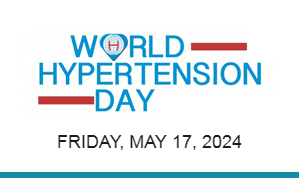20th European Meeting on Hypertension
Sunday, 20th June – When taking a detailed look at the J-shaped relation between an increased risk of cardiovascular (CV) events and achieved systolic and diastolic blood pressure (BP) <120/70 mm Hg, investigators concluded that the J-curve is a real phenomenon based on further analysis of the FEVER data. Xuezhong Zhang, MD, Clinical Trials and Research Center, Chinese Hypertension League, Beijing, China, presented finding from this innovative approach to the FEVER data at the European Society of Hypertension Annual Meeting in Oslo, Norway.
There is some debate as to optimal BP goals on drug therapy due to the absence of consistent trial data. In fact, such goals are often determined as a consequence of correlating events found in post-hoc analyses. There is some variation among these post-hoc analyses, but there has been some suggestion that a J-curve may exist in which the risk of CV events increases when achieved BP is below 120/70 mm Hg. However, this suggestion is based on a limited number of subjects and outcomes within the larger study which may cloud the analytical accuracy of the findings.
In FEVER, patients were stratified according to their mean on-treatment BP, regardless of therapeutic regimen, and CV events in each group were estimated. The ranges of systolic blood pressure (SBP) and diastolic blood pressure (DBP) were as follows: ≤110, >110-120, >120-130, >130-140, >140-150, >150-160, and >160 mm Hg for SBP; ≤60, >60-70, >70-80, >80-90, >90-100, and >100 mm Hg for DBP. A total of 9711 patients were randomized. Over 60 follow-up months, 159,844 BP measurements were performed with 3 SBP and 3 DBP readings over 30 minutes at each observation. Mean SBP and DBP values were calculated based on overall follow-up time.
During further analysis of the study data, investigators took a different analytical approach in order to reveal the nature of the J-curve phenomenon. This approach evaluated moving events per 1000 patient observations (MEPPO) instead of applying the previous overall means methodology. Analysis was then based on observations from each visit in which event and BP data was collected. Therefore, event data corresponded with BP measured prior to the visits. Zhang and colleagues also limited the previously broad 10 mm Hg range to which events were referred to 1 mm Hg steps. This allows for each observation to enter 10 times into 10 consecutive 10 mm Hg BP ranges. Thus, the overall number of analyzed data is greatly increased.
Using this methodology, the J-curve phenomenon was determined to be genuine. After adjusting for baseline risks, the risk of CV event correlated with SBP of 129 mm Hg to 139 mm Hg and DBP of 79 mm Hg to 86 mm Hg in the FEVER trial. The lowest point of the J-curve was consistent with and without adjustments. These are important findings with regards to optimal BP goals in patients receiving drug therapy for hypertension.





